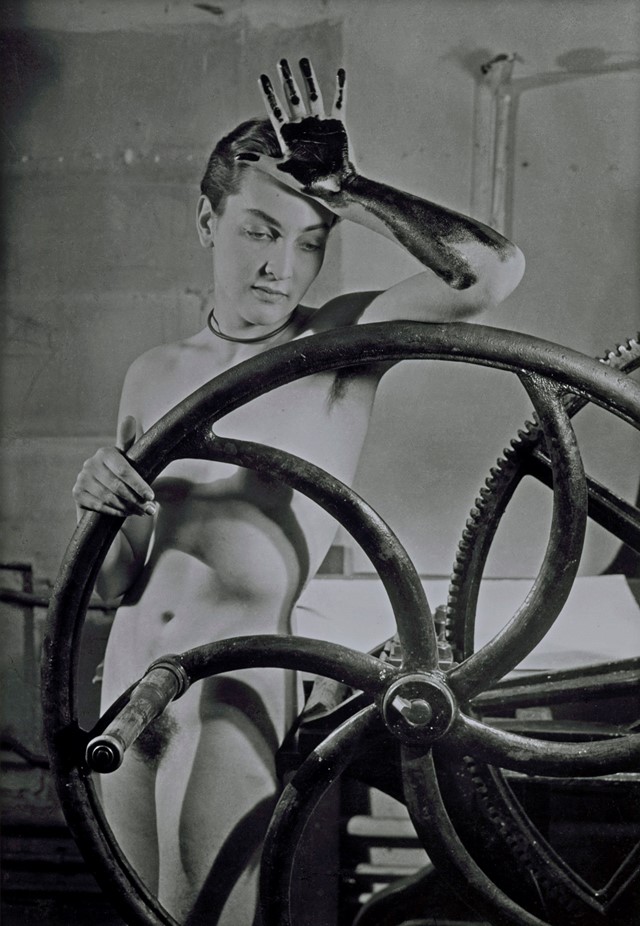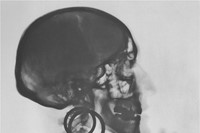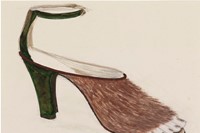A new exhibition celebrates the legendary artist who posed for Man Ray, befriended Picasso and gave claws to table legs
Who? “X= an Orange Rabbit” a young Méret Oppenheim wrote in her school notebook, and such a statement – elusive and yet self-assured – seems fitting for a woman who would go on to become one of the most prominent female artists of the 20th century. Oppenheim was born in Berlin in 1913, and brought up in a family of psychoanalysts in the south of Germany and Switzerland. Despite her scientific family, it’s clear that Oppenheim took inspiration from her grandmother, Lisa Wenger-Ruutz, a well-known children’s illustrator whose work featured smiling trees and grinning pears.
In 1932, at the age of 18, Oppenheim moved to Paris and started art classes at the Académie de la Grande Chaumière. She would later say that “it is not I who looked for the Surrealists, it is they who found me”; she rapidly befriended many older, more established artists, including the likes of Picasso and Giacometti. The following year she exhibited alongside both at Salon des Surindépendants, and Man Ray asked her to model for a series of nude photographs. From that moment onwards she remained a central figure in the art scene there.
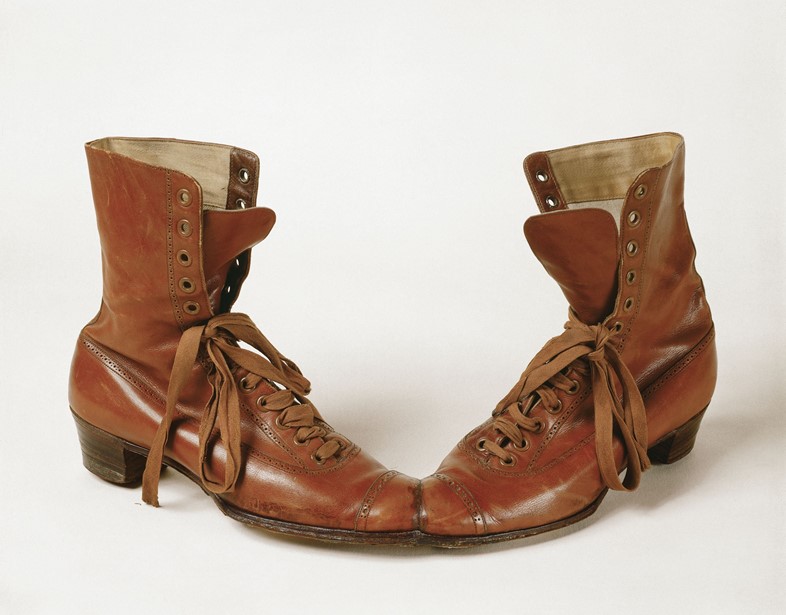
What? After Picasso and Dora Maar admired her fur-covered bracelet in a Paris café, Oppenheim was inspired to take a teacup and adorn it in a similar fashion, and the resulting Objet, or Breakfast in Fur (1936), propelled her work into the spotlight and gained her access to the exclusive Surrealist club, where she became the first woman allowed to participate as an artist. Distorting everyday objects became a signature for her, as in Das Paar (The Couple) from 1956, a pair of brown boots attached at the toe, or T42 from 1999, which depicts a pair of cups passionately kissing.
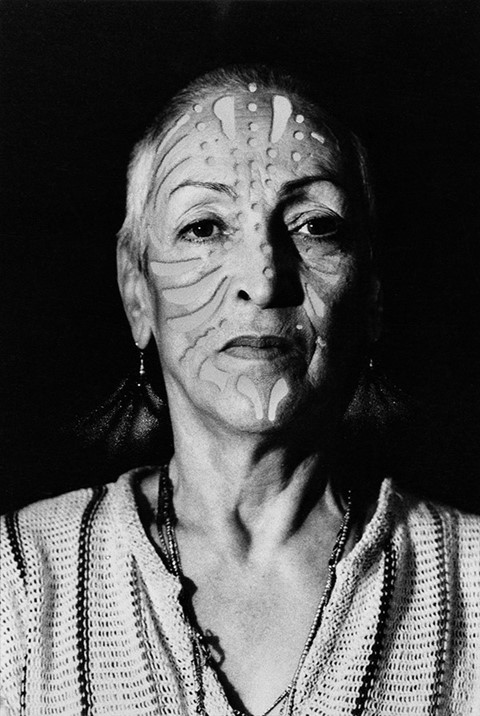
Oppenheim enjoyed playing with conventions, and was unafraid to explore and subvert established ideas. Surrealism was said by André Breton in his Surrealist Manifesto (1928) to “glove your hand”, and, appropriately, hands and gloves became key motifs for the movement – Oppenheim couldn’t resist playing with their image. In the late 1930s she collaborated with Elsa Schiaparelli on a line of Surrealist gloves, with each pair heralding a different surreal element from painted fingernails and bones to gold claws. Using grey goatskin suede, Oppenheim even screen printed thin red veins onto gloves, turning the body inside out and thereby challenging the very nature of a glove’s purpose to cover and protect.
The impact of her designs lives on to this day, in everything from high street knock-offs to references in collections by jewellery designer Dominic Jones. Now tucked away in an exhibition at the Museo d’Arte della Svizzera Italiana (MASI Lugano) Méret Oppenheim: Works in Dialogue from Max Ernst to Mona Hatoum promises to showcase much of Oppenheim’s oeuvre, and highlight the incredible range of her achievements.
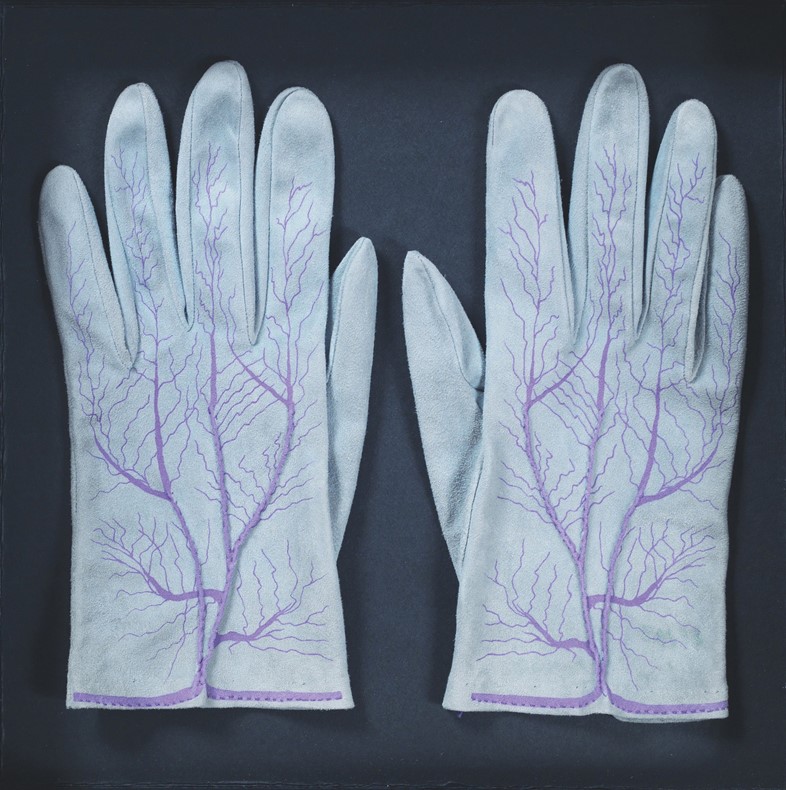
Why? The exhibition at MASI Lugano presents Oppenheim’s work in the context of her personal and creative relationships; the curators revel in the links she worked hard to forge and maintain throughout her life, without letting them overshadow her creations. Although she has often been reduced to a muse and model due to her numerous creative partnerships, Oppenheim was determined that love would not interfere with her art, so much so that she famously broke Max Ernst’s heart when she feared their relationship would destroy her career.
Alongside the work of her friends Marcel Duchamp and René Magritte, among others, the curators present several contemporary artists influenced by Oppenheim’s work. The gallery also sits around the corner from Carona, a hamlet that Oppenheim regularly visited on holidays with her family; indeed, it seems apt that Oppenheim should be celebrated with such distinction so close to a place that she held so dear.
Méret Oppenheim: Works in Dialogue from Max Ernst to Mona Hatoum, runs till May 28, 2017 at MASI Lugano, Switzerland.
